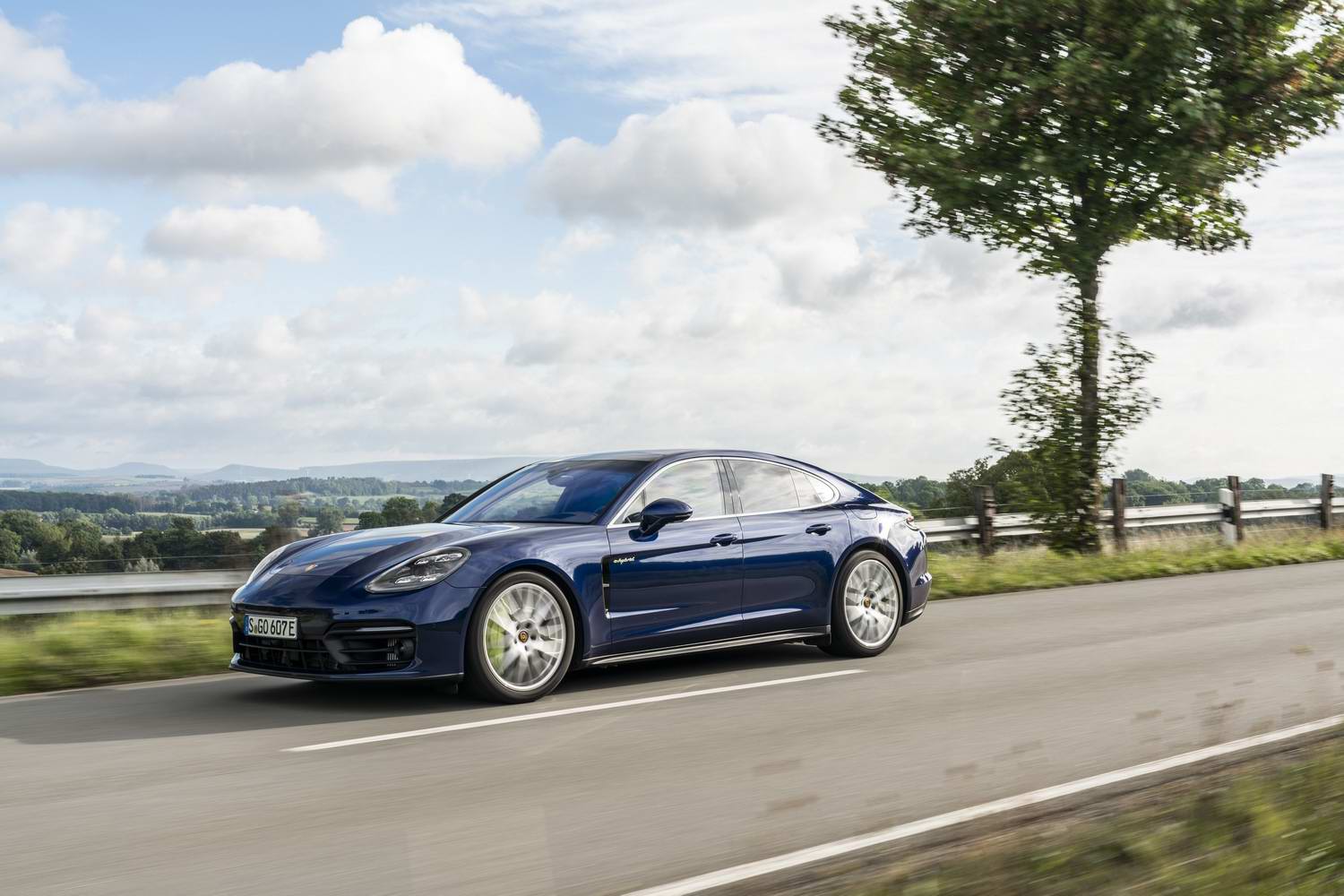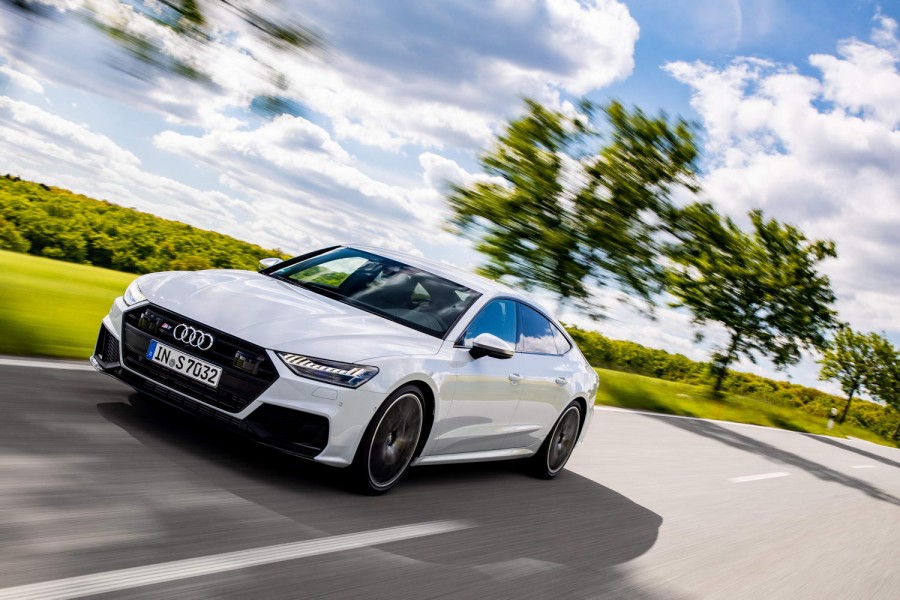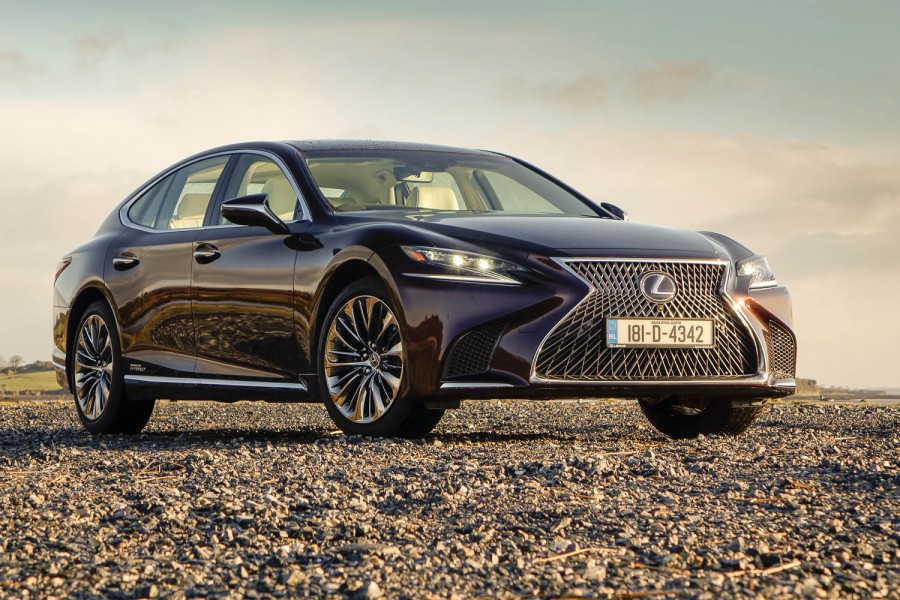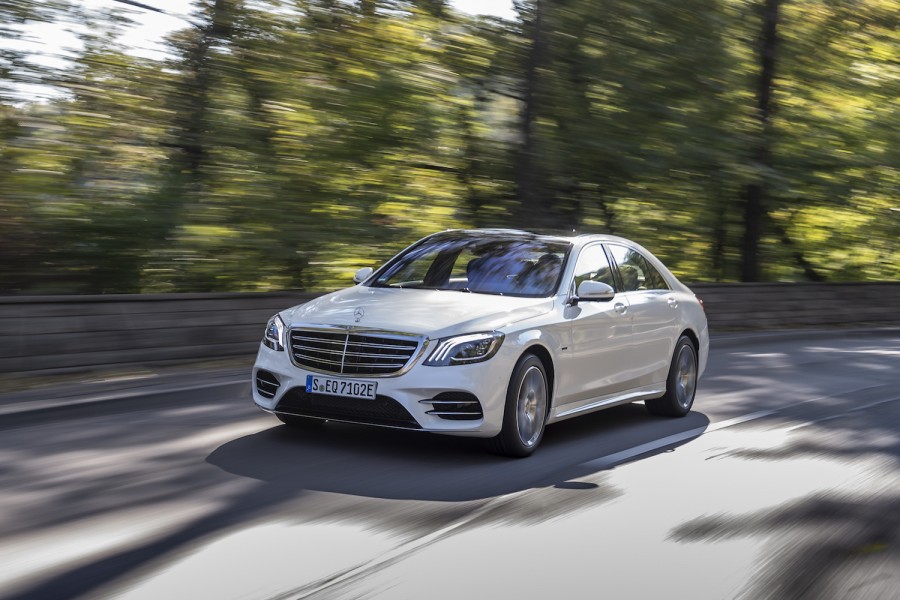The updated Porsche Panamera has landed and we've sampled the newest plug-in hybrid electric model to join the ranks, the 560hp 4S E-Hybrid. How does it feel, and did we really need a third hybrid in the German executive's ranks?
In the metal
Visually, Porsche has very lightly tweaked the second-generation Panamera, which it calls the 'G2 II'. A new, lower-front bumper features distinctive grilles and enlarged air intakes, as well as a single-strip light detail, while at the back the full-width light bar has been subtly reshaped to make it flow better across the boot lid. Inside, it's additional connectivity for the Porsche Communication Management (PCM) infotainment, the adoption of wireless Apple CarPlay support and an augmented suite of advanced driver assist safety systems, but in general the updated Panamera looks very familiar inside and out; not a problem, as Porsche's big exec is grand to behold from the kerb and is also a car possessed of a wonderful cabin.
The changes for 2021, then, relate to the drivetrain. Previously, Panamera buyers could choose from two hybrids: the 462hp 4 E-Hybrid and the monster 680hp Turbo S E-Hybrid. Neither of these have yet been confirmed for the G2 II Panamera line-up, but it is expected they will make a return, alongside this all-new model - the 4S E-Hybrid.
It's the S in the name that denotes the alterations. As with the regular petrol-only Panameras, in which there are Panamera/Panamera 4 models with 330hp and then the Panamera 4S with 440hp (all using variants of the same 2.9-litre twin-turbo V6 engine), now you get 4 and 4S versions of the E-Hybrid. That means this hybrid car uses the 440hp V6 combustion unit as its basis, to which the same 100kW (136hp) electric motor is added and an enlarged 17.9kWh (previously 14.1kWh on the pre-facelift 4 E-Hybrid) lithium-ion battery pack too. The net result of all of this is a vehicle that, on paper, is more powerful and almost as torquey as the outgoing Panamera Turbo, with 560hp (+10hp) and 750Nm (-20Nm) allowing the 4S E-Hybrid to turn in a 3.7-second 0-100km/h time and 0-160km/h in 8.7 seconds before hitting a top speed approaching 300km/h, all while returning up to 128.4mpg and emitting as little as 50g/km of CO2. It can also, thanks to the bigger battery, go up to 54km on electric power alone on the WLTP cycle.
Driving it
It's a marvel of blended technology, the Panamera 4S E-Hybrid, as it attempts to corral so many disparate characteristics into one package. It has to be sporty to drive. It has to be fast in a straight line. It has to sound good. It has to be comfortable. And it has to be capable of silent, zero-emissions running and the sort of economy that would once have been the preserve of diesel power alone.
Considering the many Herculean tasks it must accomplish, there's a case to be made for saying the 4S E-Hybrid is the finest model in an otherwise very fine range of cars under the Panamera banner... but, on first appraisal, we reckon there are a couple of issues. And they pertain to weight. On a direct comparison to the other three Porsche Traction Management (PTM - all-wheel drive in Porsche-speak) models in the revised Panamera's launch range, the 2,225kg 4S E-Hybrid is 145kg heavier than a Turbo S, carries an additional (and huge) 205kg over the GTS and is a scarcely believable 325 kilos lardier than the Panamera 4 - and it feels it.
For corner turn-in, for balance in the middle of mid- and high-speed bends, for the way its impressive drivetrain has to overcome significant inertia to get the car accelerating in a meaningful fashion, the 4S E-Hybrid always comes across as a hefty old barge. Admittedly, as it's a Porsche, we're talking relatively speaking, because it handles and goes better than the vast majority of other sports saloons out there, no matter what their form of motive propulsion. Nevertheless, if you are trying various versions of the G2 II Panamera alongside each other, you'll probably notice the 4S E-Hybrid's dynamic shortcomings.
And you should also take note of its undeniable strengths. In electric running, the lack of any combustion noise from the front-mounted V6 allows you to focus on the fact that nary a whisper of either tyre or wind noise is allowed to permeate the Panamera's cabin. You sense that the ride quality is excellent on the three-stage dampers, never too firm, while simultaneously not letting the body float or wallow during the extremes of its suspension travel. Like any modern Porsche, the 4S E-Hybrid has truly lovely steering and strong brakes, although (another minor black mark here) there is the occasional low-speed grabbing from the brakes that must perform the dual tasks (energy recuperation and stopping power) of any hybrid car. However, on the plus side, the performance - while not quite as gobsmacking as some other vehicles in the line-up - is seriously rapid, with the low-speed torque-infill of the electric motor doing much to negate any turbo lag from the V6.
Also, while its handling isn't quite as crisp and invigorating as some of the other revised Panameras in the range, it's still incredibly adept in the corners - and the most tail-happy of all the models. With more of a rear-biased weight distribution given where some of its mass is slung, the 4S E-Hybrid will easily swing its rear axle out under provocation when exiting tight bends - more so than the GTS and Turbo S variants, both of which are focused on pure performance and driver reward before all else. Admittedly, we're not sure Panamera buyers are necessarily oversteer heroes in their spare time, but it's nice to know the balance of the Porsche hybrid is still favoured to the back of the car when the limits are breached.
What you get for your money
The standard specification on the Panamera 4S E-Hybrid is generous and comfortable, but there's obviously the option to fit a lot of cost-incurring extras to the vehicle. However, in mitigation, our VRT laws mean this is one of the most affordable Panamera G2 II models of all. It starts at €138,530 (the Sport Turismo estate is another €3,805 on top of this), which already compares favourably with the 'base' rear-wheel-drive, four-door Panamera at €123,790... but if you change that 330hp Panamera to a Panamera 4 (€129,156), which is more representative as both cars have all-wheel drive, the difference in price between the purely petrol vehicle and this far more potent, multitalented hybrid is a mere €9,374. Admittedly, there's less boot space in the Panamera 4S E-Hybrid than in regular versions (it's down by 95 litres due to the placement of the electric motor and battery pack), but as you gain elsewhere from the hybrid then it's worth this marginal sacrifice in cargo capacity. Also, consider that the nearest petrol version in terms of power and performance, the new Panamera GTS, starts at €195,928 (more than €57,000 dearer) and you can see why the 4S E-Hybrid makes the most sense here in Ireland.
Summary
A smooth and technically astounding vehicle, the new Porsche Panamera 4S E-Hybrid's selling points are its low taxation, its comparatively affordable purchase price and its increased all-electric range as part of the 2021 updates. It doesn't quite pull off the outright sporting exec skills with the same glittering aplomb as some of its siblings, granted, but if you just want a fast yet discreet Panamera G2 II, this should definitely be the car for you. It's an excellent new plug-in hybrid addition to the German company's burgeoning portfolio.






















